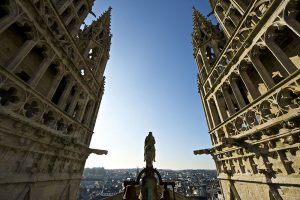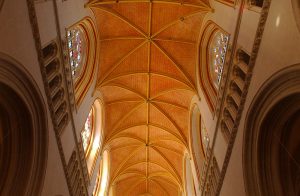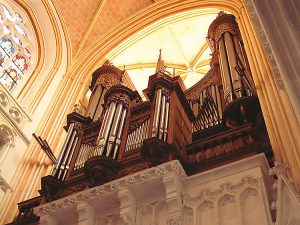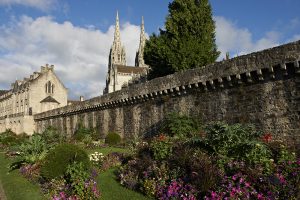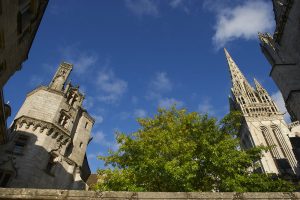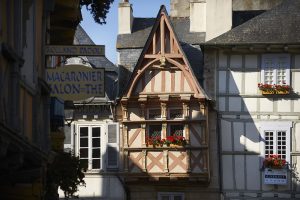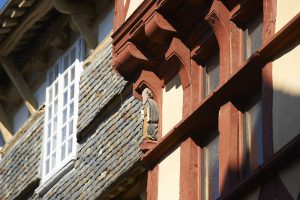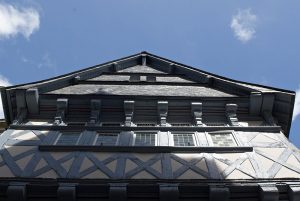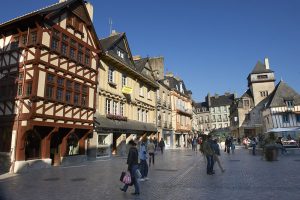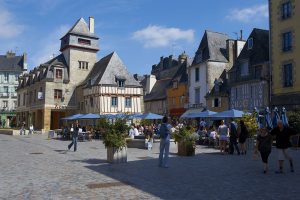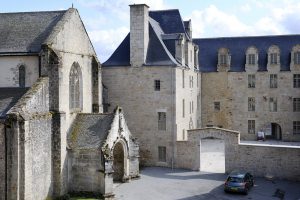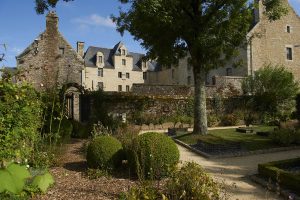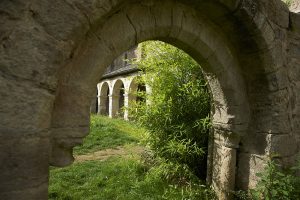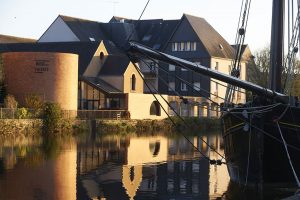
Quimper has been awarded the label City of Art and History thanks to the quality of its architectural heritage: St Corentin Cathedral, the houses of the 16th and 17th centuriesème and XVIIème The city's medieval town and the 19th century footbridges are a perfect setting for a visit to the ramparts and the quays of the Odet, the Locmaria district, the museums, the lively shopping streets, the medieval town and the 19th century footbridges.ème century, find the echoes of the market...
From St Corentin's Cathedral to the Bishops' Palace
The birth of Quimper is here within sight. St Corentin's Cathedral and the Bishops' Palace stand on St Corentin's Square, the vital core of the walled city. With these two buildings, it is the myth and history that we travel through and to which the Breton Departmental Museum echoes at every step. It was in 1239 that Bishop Reynaud decided to build St Corentin's cathedral on the foundations of an old Romanesque church. Adjacent to the cathedral, the Bishops' Palace houses the Breton Departmental Museum. Under the Ancien Régime, this palace was the residence of the bishop of Cornouaille, who was also the lord of the walled city of Quimper. Until the middle of the XIXème In the 19th century, successive bishops remodelled, enlarged and restored this residence. The present building was constructed between 1645 and 1647 by the Quimper architect Bertrand Moussin.
The Episcopal city and the ramparts
A belt of ramparts delimits the original core of the town. In this small area, which concentrates all the activities of the city, the houses of the canons and the bourgeoisie were built. In the 19thème In the 19th century, the district was chosen as the seat of municipal power, the location of the Museum of Fine Arts and the construction of the Saint Francis Market.
Timber-framed houses are part of the urban landscape. Testimony to a medieval know-how, these buildings have marked out the centuries, from the XIVème in the XIXèmeThe houses are a real puzzle of wood and are the pride of most Breton towns. Thanks to them, it is possible to imagine Quimper at a time when two powers competed, the bishop in the walled city and the dukes on the other bank of the Steïr.
The city of the Dukes of Brittany
La Terre au Duc, from the rue de la Herse to the rue du Chapeau Rouge, separated from the episcopal city by the Steïr. Names such as the venelle du Pain Cuit and the venelle du Moulin au Duc remind us that the ducal authority had a mill and communal ovens there. The former Ursuline convent, now the Ursuline Media Library, and various private mansions are located in the Terre au Duc. It is also the place where major cultural sites such as the Théâtre de Cornouaille and the Centre d'Art Contemporain are located.
Until the end of the 19th century, the name "Terre au Duc" was used to designate theème In the 19th century, the area between the Steïr, the Odet and the suburb of Bourg-les-bourgs. Originally, this area belonged to the duke, who had installed the symbols of his power there: court house, prison, mill and communal ovens.
Locmaria, early site of Quimper
The Locmaria district is located on the left bank of the Odet, south of the walled city and St Corentin cathedral. From the installation of the first earthenware factory in 1690, the working-class character of the district was affirmed, Locmaria became a popular district with numerous small houses and hovels, warehouses, factories, small shops, from which emerged some beautiful houses of notables, large gardens, and especially the church (XIème and XIIème) and the priory (XVIIème and XVIIIème) which was home to a community of Benedictine nuns.
Once an ecclesiastical stronghold located in the heart of ancient Aquilonia, the primitive core of Quimper, Locmaria Abbey is the oldest Christian settlement in the city. The abbey church of Notre Dame is a perfect example of the early Romanesque art in Brittany.

